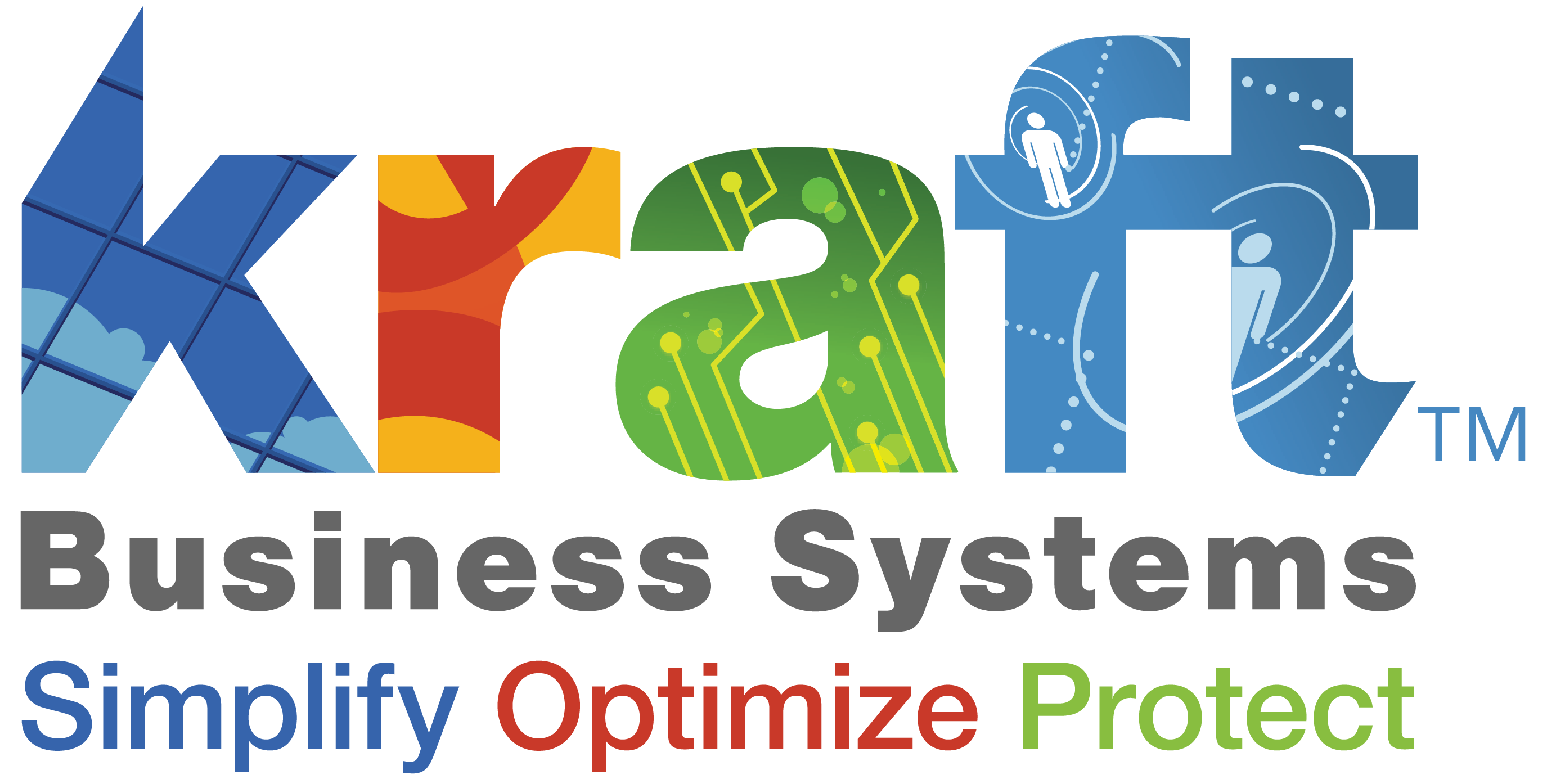A voip server provider is a company that hosts and manages the infrastructure needed to make phone calls over the internet instead of traditional phone lines. These providers handle the technical backend that converts your voice into digital data packets and routes them to their destination.
Key things to know about VoIP server providers:
- Hosted vs. Self-Hosted: Most providers offer cloud-hosted solutions, eliminating the need for on-site hardware
- Service Types: VoIP-only providers, cloud PBX systems, or unified communications platforms
- Core Features: Call routing, voicemail, auto attendants, mobile apps, and business integrations
- Pricing: Typically ranges from $20-45 per user per month with pay-as-you-go options available
- Benefits: Up to 30% cost savings compared to traditional phone systems, plus improved mobility and scalability
VoIP has transformed how businesses communicate. As one satisfied customer noted: “I am saving more than 50% and getting amazing sound quality.” This shift isn’t just about cost – it’s about flexibility, advanced features, and supporting today’s remote workforce.
The challenge? Not all VoIP server providers are created equal.
Reliability varies dramatically between providers. Some offer 99.99% uptime guarantees with multiple redundant data centers, while others struggle with basic call quality. Security measures, customer support quality, and feature sets also differ significantly.
Your choice of voip server provider directly impacts your business communication reliability, employee productivity, and customer experience. A poor provider can lead to dropped calls, security vulnerabilities, and frustrated teams. The right provider becomes an invisible backbone that just works.
Why Businesses Are Switching to IP Telephony
The migration from traditional phone systems to VoIP isn’t just a trend – it’s a fundamental shift driven by compelling business advantages.
Cost savings represent the most immediate benefit. VoIP can save businesses up to 30% compared to legacy phone solutions. We’ve seen organizations reduce their telecommunications expenses dramatically by eliminating expensive hardware, reducing monthly service fees, and cutting long-distance charges. One customer shared: “I don’t know why I didn’t search for an alternative before… I am saving more than 50% and getting amazing sound quality.”
Flexibility transforms how teams communicate. Unlike traditional PBX systems that tie you to physical locations, VoIP follows your employees wherever they work. Remote workers can use their business phone number on their smartphone, laptop, or tablet. This mobility became crucial during the pandemic and remains essential for hybrid work environments.
Scalability eliminates the growing pains of traditional phone systems. Adding new users takes minutes instead of weeks. No more waiting for technicians to install physical lines or purchasing expensive hardware modules. Cloud-based VoIP systems can scale from 5 to 500 users with just a few clicks in your admin portal.
VoIP Server Providers: What Businesses Need to Know
What Is a VoIP Server Provider & How It Works
Think of a voip server provider as the invisible conductor of your business phone calls. When you pick up your phone and dial a number, there’s a complex orchestra of technology working behind the scenes to connect your voice to its destination.
Here’s what actually happens when you make a call: Your voice gets transformed into tiny digital voice packets – imagine your words being chopped up into millions of digital pieces. These packets then travel across the internet using specialized protocols. SIP (Session Initiation Protocol) handles the initial handshake – it’s like the polite “hello” that sets up your call. Then RTP (Real-time Transport Protocol) takes over, carrying your actual voice data back and forth.
The real magic happens in your provider’s infrastructure. Their powerful servers work around the clock to route calls, convert protocols, and bridge connections between internet-based calls and traditional phone networks. This entire process happens in milliseconds, which is why your conversations feel natural and immediate.
How Do VoIP Phone Systems Work?
Most businesses today choose hosted PBX solutions. This means your provider handles all the technical heavy lifting in their data centers. You get enterprise-grade phone features without buying expensive hardware or hiring specialized technicians. It’s like having a world-class phone system without the headaches of maintaining it.
Self-hosted servers offer another path, but they require serious technical expertise. You’ll need dedicated IT staff to handle security updates, hardware maintenance, and troubleshooting. Most businesses find that hosted solutions deliver better reliability at lower costs.
Comparing VoIP Server Provider Types
Not every voip server provider offers the same thing. Understanding these different approaches helps you find the perfect match for your business needs.
VoIP-only providers keep things simple by focusing exclusively on voice services. They typically offer competitive rates and straightforward calling features. These providers work beautifully for businesses that need reliable phone service without bells and whistles.
Cloud PBX providers deliver the full phone system experience through the cloud. They replace those bulky old PBX boxes with cloud-based alternatives, offering features like auto attendants, call queues, voicemail-to-email, and detailed call reports. It’s like upgrading from a flip phone to a smartphone.
Unified Communications as a Service (UCaaS) providers bundle everything together – voice, video, messaging, and collaboration tools in one integrated platform. These solutions shine for organizations that want to consolidate multiple communication tools under one roof.
Behind the Scenes: Call Setup, Routing & Termination
The technical infrastructure supporting your daily calls involves sophisticated systems working together like a well-oiled machine.
Softswitch technology acts as the brain of VoIP networks. These powerful servers make split-second decisions about call routing, handle billing, and deliver advanced features. When you dial a number, the softswitch figures out the most efficient path for your call – whether it stays on the internet or needs to connect with traditional phone networks.
Data centers provide the rock-solid foundation for VoIP services. Leading providers operate multiple facilities spread across different geographic locations, each equipped with redundant power systems, cooling, and network connections. This geographic distribution means your phone service stays up even if one facility experiences problems.
Redundancy extends far beyond just having backup equipment. The best providers maintain multiple internet connections, backup power systems, and automatic failover procedures that kick in seamlessly during outages. You’ll never know these systems are working – until the day they save your business from a communication breakdown.
Key Benefits & Potential Challenges
VoIP technology brings exciting opportunities to businesses, but like any major system change, it comes with both advantages and considerations worth understanding upfront.
The lower Total Cost of Ownership (TCO) often surprises business owners with its scope. Beyond the obvious monthly savings, VoIP eliminates those hefty upfront hardware purchases that traditional PBX systems demand. No more expensive phone cabinets taking up closet space or costly maintenance contracts. Cloud-based VoIP systems can reduce initial costs and long-term maintenance compared to on-premises PBX systems, freeing up capital for other business priorities.
Remote work mobility has become a game-changer for modern businesses. Your team members can answer their business line from a coffee shop in California or their home office in Michigan – and customers never know the difference. Mobile apps transform smartphones into full-featured business phones, complete with access to company directories, call queues, and advanced features. This flexibility proved invaluable during recent global changes and continues supporting hybrid work environments.
Advanced features that once cost extra with traditional systems now come standard with most voip server provider solutions. Call recording helps with training and compliance. Voicemail transcription saves time by converting messages to text. Auto attendants professionally route calls even when you’re busy. Many providers now include AI-powered capabilities like call sentiment analysis and automated transcription – features that would have seemed futuristic just a few years ago.
E911 support ensures emergency services can locate callers accurately, though this requires proper configuration and address management for each user location. The peace of mind knowing your team can reach help when needed makes this feature essential.
However, VoIP does come with considerations that smart businesses plan for ahead of time.
Bandwidth dependence represents the most significant technical requirement. VoIP needs stable internet connections with sufficient bandwidth and low latency to deliver clear calls. Think of it like streaming a video call – poor network conditions cause similar problems like choppy audio, annoying delays, or dropped calls that frustrate everyone involved.
Security risks require attention but shouldn’t cause panic. VoIP traffic can potentially be intercepted, and systems might face toll fraud attempts. The good news? Proper security measures including encryption, access controls, and monitoring effectively address these concerns. Most reputable providers build security into their systems from the ground up.
How VoIP Maintains Call Quality, Reliability & Uptime
Quality of Service (QoS) mechanisms act like traffic controllers for your network, giving voice calls priority over other internet activities. This ensures crystal-clear conversations even when someone else is downloading large files or streaming videos. Configuring QoS settings on your router helps guarantee smooth calls during busy network periods.
Jitter buffers work behind the scenes to smooth out network hiccups that could affect call quality. These clever temporary storage areas collect voice packets and play them back at consistent intervals, compensating for network delays and packet timing variations. You’ll never notice them working – which means they’re doing their job perfectly.
99.99% SLAs (Service Level Agreements) represent the gold standard for uptime commitments. This translates to less than 53 minutes of downtime per year – impressive reliability that most traditional phone systems struggle to match. Leading providers achieve this through redundant infrastructure, constant monitoring, and rapid response procedures that kick in automatically when issues arise.
Limitations You Should Plan For
Power outages affect VoIP systems differently than old-fashioned landlines. While traditional phones often worked during power failures, VoIP requires electricity for internet equipment and phones to function. Battery backup systems for critical equipment help maintain service during brief outages, and many businesses find this small investment worthwhile for peace of mind.
Emergency calling works reliably with VoIP but needs proper setup attention. Unlike landlines that automatically provided location information, VoIP systems require manual address configuration for each user. This becomes more complex for mobile workers or businesses with multiple locations, but it’s manageable with good planning.
Internet failures completely disable VoIP service – there’s no getting around this dependency. Having backup internet connections or cellular failover systems ensures business continuity when your primary connection fails. Some providers offer automatic call forwarding to mobile phones when internet connections go down, keeping important calls flowing even during technical difficulties.
Choosing the Right VoIP Server Provider
Finding the perfect voip server provider feels overwhelming when you’re staring at dozens of options. But here’s the thing – the right choice becomes obvious when you know what really matters for your business.
Reliability isn’t negotiable. Your phone system needs to work when customers call, when deals are closing, and when emergencies happen. Look for providers promising at least 99.99% uptime with multiple data centers backing up their claims. Don’t just take their word for it – ask about their disaster recovery plans and what happens when equipment fails.
Security protects more than just your conversations. VoIP systems are prime targets for hackers looking to rack up expensive international calls on your dime. The best voip server provider options include voice traffic encryption, multi-factor authentication, and smart fraud detection that spots suspicious calling patterns before they cost you thousands.
Scalability saves you from future headaches. Your business will grow, hire seasonal workers, or maybe downsize during tough times. Cloud-based systems should let you add or remove users without buying new hardware or waiting for technician visits. Think about your busiest seasons and plan accordingly.
Support quality separates the winners from the wannabes. When your phones stop working, you need real people who can actually fix problems – not chatbots or overseas call centers reading scripts. Look for providers with U.S.-based support teams, multiple ways to reach them, and reasonable response times.
Integrations turn your phone system into a productivity powerhouse. The right provider connects seamlessly with your CRM, help desk software, and other business tools. API access lets you build custom connections for specialized needs that generic solutions can’t handle.
Everything You Need to Know About Voice Over Internet Protocol
Must-Have Features in a VoIP Server Provider
Auto attendant functionality makes even small businesses sound professional. Instead of paying someone to answer every call, your system greets callers with custom messages and routes them to the right person or department. It’s like having a digital receptionist who never takes a sick day.
Call recording serves way more purposes than you might expect. It helps with training and quality control, but it also protects you legally and helps resolve customer disputes. Look for unlimited storage and easy search features – you’ll thank yourself later when you need to find that important conversation from three months ago.
Mobile apps extend your office phone to wherever your team works. The best apps work just like desk phones, complete with call queues, company directories, and conference calling. This feature became essential during remote work shifts and remains crucial for modern businesses.
Analytics and reporting reveal patterns you never knew existed. Which hours are busiest? How long do customers wait on hold? Which team members handle the most calls? These insights help you staff appropriately and identify training opportunities before problems become complaints.
CRM integration eliminates the annoying dance of switching between phone and computer screens. When customers call, their information pops up automatically. When calls end, notes save themselves. It’s simple efficiency that adds up to significant time savings.
Pricing Models & What Affects Your Bill
Per-user plans work like gym memberships – you pay monthly for each person who needs phone service. These plans typically bundle core features with options to add premium capabilities. Most businesses find this model predictable and easy to budget.
Pay-as-you-go models charge based on actual usage, like your electricity bill. This approach makes sense for businesses with seasonal patterns or unpredictable call volumes. Some providers offer hybrid models that combine base subscriptions with usage charges for heavy calling periods.
Add-ons can surprise you if you’re not careful. Premium features like advanced analytics, extra storage, or specialized integrations often cost extra. Factor these into your budget from the start – it’s better to know the real cost upfront than get sticker shock later.
Taxes and fees vary wildly depending on your location and provider. Some companies include everything in their quoted price while others add charges separately. Always ask for the total monthly cost including all fees, taxes, and regulatory charges.
Your final bill depends on several key factors: number of users and how many calls happen simultaneously, international calling needs, premium feature selections, additional phone numbers, integration usage, and support level agreements. Understanding these variables helps you compare providers accurately and avoid budget surprises.
| Feature | Traditional PBX | Hosted VoIP | UCaaS |
|---|---|---|---|
| Initial Cost | High (hardware purchase) | Low (minimal equipment) | Low (cloud-based) |
| Maintenance | In-house IT required | Provider managed | Provider managed |
| Scalability | Limited by hardware | Easily scalable | Highly scalable |
| Features | Basic calling | Advanced phone features | Integrated communications |
| Remote Access | Limited | Full mobile support | Complete collaboration suite |
| Disaster Recovery | Manual backup required | Built-in redundancy | Automatic failover |
VoIP Server Providers: What Businesses Need to Know
From Legacy Phones to VoIP: Setup & Migration Roadmap
Making the switch from traditional phone systems to VoIP doesn’t have to be overwhelming. With proper planning, your transition can happen smoothly without disrupting daily operations.
Number portability is often the first concern businesses have – and the good news is you can absolutely keep your existing phone numbers. The process typically takes 2-3 weeks and requires coordination between your current provider and your new voip server provider. Submit your porting requests well before your planned go-live date to avoid any last-minute surprises. Your provider will handle most of the paperwork, but you’ll need to provide account details and authorization letters.
Hardware choices give you flexibility in how your team communicates. IP phones connect directly to your network and offer the richest feature set – think color displays, programmable buttons, and built-in conference capabilities. If you want to ease the transition, analog adapters let you use your existing phones with VoIP service, though you’ll miss out on advanced features.
Many businesses are finding that softphones – applications that turn computers and mobile devices into full-featured phones – work perfectly for their needs. This approach is especially popular with remote teams and can significantly reduce hardware costs.
SIP trunks replace your traditional phone lines with virtual connections that scale with your business. These connect your phone system to the public telephone network, but unlike old-fashioned phone lines, you can add or remove capacity instantly. Most hosted VoIP providers include SIP trunking in their solutions, so you won’t need to manage this separately.
Desk phones designed for VoIP offer impressive capabilities compared to their traditional counterparts. However, don’t feel pressured to outfit every employee with new hardware immediately. Many successful deployments start with a mix of new IP phones for key staff and softphones for everyone else.
Headsets become more valuable with VoIP systems since features like call recording and analytics often lead to longer, more detailed conversations. Wireless headsets improve mobility around the office, while noise-canceling features ensure clear communication even in busy environments.
Step-by-Step Deployment Checklist
A successful VoIP deployment follows a logical sequence that minimizes risk and maximizes adoption.
Start with a thorough network audit to identify potential issues before they affect your calls. Test your internet connection for speed, latency, and stability throughout the day. Configure Quality of Service (QoS) settings on your network equipment to prioritize voice traffic over other data. This step alone prevents most call quality problems.
Choose pilot users carefully – select tech-savvy employees who can provide detailed feedback and help troubleshoot minor issues. Starting with a small group lets you refine configurations and processes before rolling out to your entire team. These early adopters often become your internal champions who help train other staff members.
Training makes the difference between frustrated employees and enthusiastic adopters. Even simple VoIP systems offer features that work differently than traditional phones. Provide hands-on training sessions where people can practice common tasks like transferring calls, accessing voicemail, and using mobile apps. Create quick reference guides that employees can keep at their desks.
Plan your go-live coordination for low-activity periods when a few hiccups won’t disrupt critical business operations. Have technical support available from both your internal team and your voip server provider. Keep backup communication methods ready until you confirm everything works properly – this might mean keeping a few traditional lines active for the first week.
Supporting Remote & Mobile Users Post-Launch
Remote and mobile workers often become your biggest VoIP advocates once they experience the freedom it provides.
Softphones give remote employees full access to your phone system from any device with internet connectivity. Quality softphone applications offer the same features as expensive desk phones – call transfer, conferencing, voicemail access, and integration with business applications. Your remote team can participate in call queues and access company directories just like office-based colleagues.
Some providers require VPN connections for remote workers to access certain features or ensure optimal call quality. However, many modern voip server providers offer optimized connections that maintain security without requiring VPNs. This approach reduces complexity for remote workers while maintaining the security your business needs.
Multi-factor authentication becomes essential when employees access your phone system from various locations and devices. This security measure prevents unauthorized access even if login credentials are compromised. Most modern VoIP systems make MFA simple with smartphone apps or text message codes.
Device management requires new policies when remote workers use personal devices for business calls. Establish clear guidelines for softphone installation, security updates, and acceptable use. Consider mobile device management solutions if you need stronger control over how business applications are used on personal devices.
Our experience helping businesses throughout Michigan – from Grand Rapids to Detroit, Traverse City to Ann Arbor – has shown that successful VoIP deployments require careful planning and the right voip server provider partnership. The businesses that take time to plan their migration thoroughly end up with the smoothest transitions and happiest employees.
VoIP Server Providers: What Businesses Need to Know
Frequently Asked Questions About VoIP Server Providers
How does number portability work with VoIP?
Moving your existing phone numbers to a new voip server provider is easier than most people think. The process starts when you submit a Letter of Authorization (LOA) to your new provider, giving them permission to request your numbers from your current carrier.
Your new provider handles most of the heavy lifting. They coordinate directly with your old provider to transfer the numbers while you focus on running your business. The whole process feels surprisingly smooth once you get it started.
Timing matters when planning your switch. Local numbers typically take 2-3 weeks to transfer, while toll-free numbers can take up to 4 weeks. Don’t cancel your existing service until the transfer completes – you’ll want to avoid any gaps in phone coverage.
The paperwork needs to be perfect. Your current phone bill becomes your best friend during this process since it contains all the account details your new provider needs. Make sure names, addresses, and account numbers match exactly what’s on file with your current provider. Even small discrepancies can delay the transfer.
Some providers offer temporary numbers so you can start using VoIP features immediately while waiting for your permanent numbers to port. This approach lets you begin training your team and testing the system without waiting weeks to get started.
What equipment do we actually need?
One of the best things about modern VoIP is how little equipment you actually need to get started. Gone are the days of massive phone closets filled with complicated hardware.
Your internet connection forms the foundation of everything. You need stable, reliable internet with enough bandwidth to handle your calls plus regular business activities. Most businesses find their existing internet service works fine, though you might want to upgrade if you’re still using basic DSL.
For making calls, you have several options that work equally well. Traditional IP phones plug directly into your network and offer familiar handset experiences with advanced features. Softphone applications turn any computer into a full-featured business phone. Mobile apps let smartphones access your complete phone system from anywhere.
Quality headsets become more important with VoIP since many users find themselves on calls more often. Wireless models improve mobility around the office, while noise-canceling features help in busy environments.
A good router with Quality of Service (QoS) capabilities helps maintain call quality when your internet gets busy. This feature prioritizes voice traffic over other data, preventing choppy calls during peak usage times.
Power backup for your network equipment keeps phones working during brief outages. An Uninterruptible Power Supply (UPS) for your router and internet modem provides peace of mind.
Many voip server providers include IP phones with their service plans, reducing your upfront costs. Others offer equipment leasing options that spread costs over time while including support and replacement coverage.
Can VoIP handle emergency (E911) calls reliably?
Emergency calling works with VoIP systems, but it requires more attention than traditional phone lines. The technology is reliable – the challenge lies in proper setup and ongoing management.
Location information represents the biggest difference from landlines. Traditional phones automatically send your address to emergency dispatchers. VoIP systems require you to manually assign physical addresses to each phone extension and keep this information current.
Setup involves registering each user’s location with your provider. When someone dials 911, the system sends their assigned address to emergency services. This works perfectly for employees who stay in fixed locations but gets complicated for remote workers or people who move between offices.
Mobile workers need special attention since their locations change frequently. Some employees might work from home one day, a coffee shop the next, and a client site the third day. Keeping location information current becomes nearly impossible for highly mobile staff.
Testing your emergency procedures should happen regularly. Make sure your team knows how E911 works with your VoIP system and understands any limitations. Some organizations maintain traditional landlines in critical locations specifically for emergency calling.
Backup communication methods become important during power outages since VoIP requires electricity for internet equipment. Emergency services can’t call you back on a VoIP line if your power is out.
Most reputable providers offer comprehensive E911 support including address management tools and detailed setup guidance. The key is treating emergency calling as an ongoing responsibility rather than a one-time setup task.
Training your team on these limitations helps ensure everyone knows what to expect. Remote workers should understand they might need to provide verbal location information to emergency dispatchers, especially if they’re working from temporary locations.
VoIP Server Providers: What Businesses Need to Know
Conclusion
Choosing the right voip server provider isn’t just about making phone calls – it’s about building a communication foundation that supports your business for years to come. Think of it as choosing a business partner who’ll be there when your team needs to connect with customers, collaborate on projects, and keep operations running smoothly.
The numbers speak for themselves: businesses consistently save up to 30% on their communication costs while gaining features that would have cost thousands extra with traditional phone systems. But here’s the thing – these benefits only happen when you choose wisely and implement thoughtfully.
We’ve seen the difference here in Michigan. Companies that rush into VoIP without proper planning often struggle with call quality issues and frustrated employees. Those that take time to evaluate providers carefully? They wonder why they waited so long to make the switch.
Your provider selection should focus on five critical areas. Reliability comes first – look for that 99.99% uptime guarantee backed by real infrastructure, not just marketing promises. Security protects your business from toll fraud and eavesdropping through proper encryption and monitoring. Scalability ensures your system grows with you without expensive overhauls. Support quality makes the difference between minor hiccups and major headaches. Integration capabilities connect your phone system to the tools your team already uses daily.
Business continuity depends on communication that just works. Whether your team operates from downtown Grand Rapids or spreads across Michigan’s diverse business landscape, your phone system needs to be the reliable constant that keeps everyone connected.
At Kraft Business Systems, we’ve guided organizations through VoIP transitions that transform how they operate. From small professional practices in Traverse City to larger operations throughout the state, we’ve seen how the right voip server provider partnership creates lasting competitive advantages.
The communication landscape continues evolving rapidly, but smart businesses don’t wait for perfect timing. They recognize that legacy phone systems become more expensive and limiting each year they delay the transition. Meanwhile, early adopters enjoy lower costs, better mobility, and advanced features that improve both employee satisfaction and customer experience.
VoIP Phone System for Small Office Guide
The best time to explore VoIP solutions? Right now. Communication technology will keep advancing, but the core principles remain unchanged: choose a reliable provider, plan your implementation carefully, and invest in proper training for your team.
Ready to find how the right voip server provider can transform your business communications? Our team understands the unique challenges Michigan businesses face, from seasonal fluctuations to remote work requirements. We’re here to help you steer the options and find the solution that fits your specific needs.
Don’t let outdated phone technology limit your business potential. Explore VoIP solutions today and join the growing number of organizations that have finded the freedom, flexibility, and cost savings of modern communication systems. Your future self will thank you for making the move.










